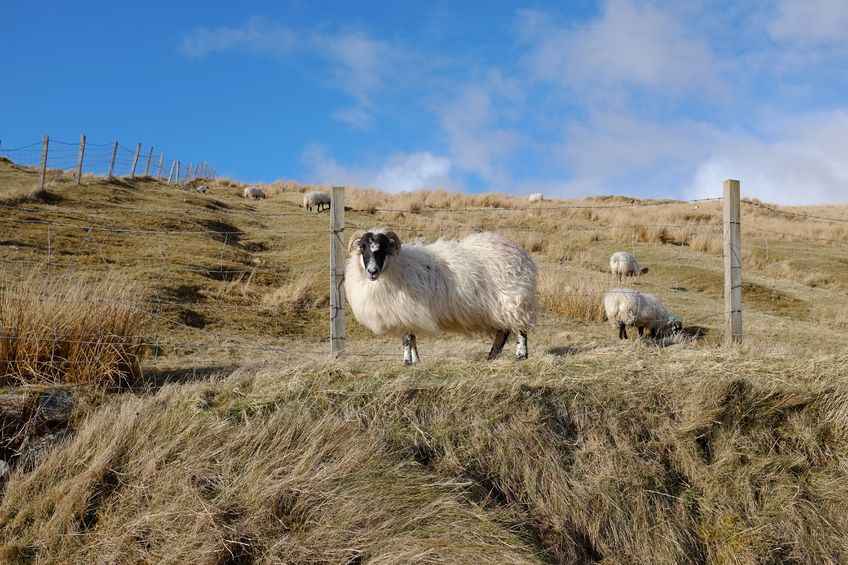
Brexit will have important implications on UK agricultural commodity markets due to potentially significant changes to trade flows, according to a new report.
The report was written by economists from the Belfast-based Agri-Food and Biosciences Institute in conjunction with the University of Missouri, USA.
It examines three Brexit trade scenarios: Bespoke Free Trade Agreement (FTA) with the EU; World Trade Organisation (WTO) default Most Favoured Nation (MFN) tariffs and Unilateral Trade Liberalisation.
The modelling system captures the impacts on commodity markets as a result of changes in trade flows with the EU and the rest of the world.
It has been substantially updated to account for the fact that in the case of Brexit the UK and EU markets would no longer be fully integrated.
Bespoke FTA with the EU
This scenario is in line with the goals for an ambitious and comprehensive Free Trade Agreement (FTA) and a new customs agreement within the Brexit White Paper, with tariff and quota free access for UK exports to the EU and vice-versa tariff and quota free access for imports into the UK from the EU.
However, additional trade facilitation costs are incorporated for cross border administration paperwork (checking rules of origin for example), sanitary and phytosanitary inspections and delays at ports.
The report’s results indicate that producer prices within the UK domestic market increase slightly for commodities in which the UK is a net importer, e.g. beef and cheese, but decrease a little for commodities in which it is a net exporter, e.g. barley.
While the directional impact on producer prices varies, across all commodities the projected changes in prices are relatively small due to limited disruption to trade. Given the modest price changes, it is projected that changes in production and value of output are marginal.
WTO default
In the absence of an FTA between the UK and the EU, the UK would fall back to WTO default MFN tariffs, at least in the short-run.
Under this scenario, MFN tariffs are applied on UK exports to the EU and likewise imports from the EU to the UK.
The default MFN tariffs are in the main very high and hence, the imposition of these tariffs leads to significant adjustments in trade between the UK and EU-27.
The report projects that the changes in trade have significant impacts on domestic markets, with the direction of impact again depending on whether the UK is a net importer or a net exporter of the relevant commodity.
Thus, in the dairy, beef, pig and poultry sectors producer prices and output values are projected to increase significantly. The imposition of high tariffs adds a wedge to EU prices and greatly reduces the competitiveness and thus the volumes of EU imports.

Within the Baseline, imports to the UK from the EU in these sectors are considerable, and hence the reduction in available supplies in this scenario exerts an upward impact on UK prices.
While higher producer prices benefit producers, there would also be knock-on consequences in the form of higher consumer prices. Within these sectors, higher prices have positive impacts on production.
The positive production impact in the pigs sector exceeds that in the beef sector, partly because the life-cycle dynamics of this sector mean that it is able to respond quickly to price changes.
In line with the price and production projections, the pig sector exhibits the largest increase in value of output.
Within the dairy sector, the positive producer milk price response is higher in England, Wales and Scotland compared to Northern Ireland due to the much higher reliance on the powder market in the latter.
The analysis assumed that world prices limit the extent to which powder prices fall (the UK is a net exporter of powders). Hence, in Northern Ireland the projected rise of cheese and butter prices have a smaller impact on the producer milk price.
In contrast, lower producer prices are projected in the sheep, wheat and barley sectors. Here, the introduction of MFN tariffs diminishes the competiveness and thus the volumes of UK exports to the EU, which leads to increases in available supplies within the domestic market.
The negative price impact is particularly marked in the sheep sector due to the large quantity of sheepmeat currently exported to the EU from the UK.
The projected fall in price has a depressing impact on UK sheepmeat production and thus on the value of output. The reductions in prices and output values in the wheat and barley sectors are more modest.
Unilateral Trade Liberalisation
In order to avoid applying the high WTO default MFN import tariffs, the report explained that the UK could potentially opt for unilateral trade liberalisation, where tariffs on imports from the EU and the rest of the world are reduced.
Under this scenario, the economists examine a radical version of unilateral trade liberalisation in which the UK sets zero tariffs on imports to the UK from both the EU and the rest of the world, while exports from the UK face trading partners MFN tariffs.
The results indicate that the elimination of tariff barriers under this scenario has a depressing impact on UK prices and output values across all commodities.
However, the extent varies across sectors depending on the closeness of UK prices to their world price counterparts in the Baseline.
The downward impacts on prices and output values are particularly acute in the beef and sheep sectors since producers in other parts of the world are very competitive in these sectors.
It is projected that radical unilateral trade liberalisation with zero tariffs leads to a large increase in imports in these sectors from the rest of the world, which exerts downward pressures on prices in the UK.
The reduction in producer prices would also have a depressing impact on consumer prices, but would impose great pressures on producers within the beef and sheep sectors. It is projected that there are significant reductions in production in these sectors.
However, the reductions may not be fully captured by the end of the projection period due to the life cycle dynamics in the beef and sheep sectors; the decline in cow and ewe numbers is even greater.
In addition, there is an associated impact and uncertainty regarding the profitability of the progeny from the dairy herd entering the beef herd in response to such a significant decline in the beef price.
Scotland experiences a larger decline in beef production compared to the rest of the UK. This reflects the lower proportion of beef sourced from the dairy herd in Scotland where it is projected that ‘Unilateral Trade Liberalisation’ has a substantial negative impact on beef cow numbers, but a relatively modest negative impact on dairy cow numbers.
All sectors exhibit a negative change in the value of output under the ‘Unilateral Trade Liberalisation’ scenario, but the impacts are most pronounced in the beef and sheep sectors.
